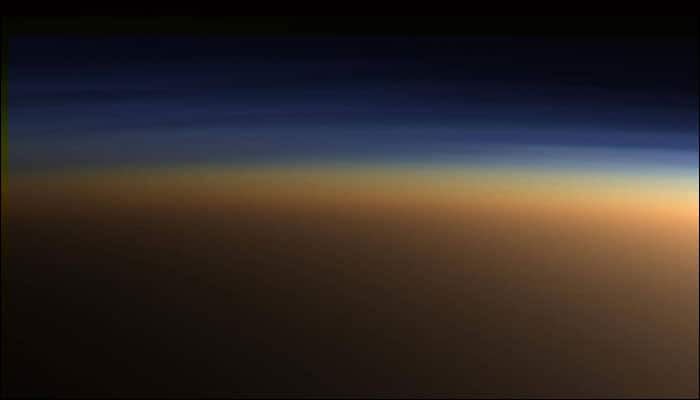New Delhi: NASA's Cassini mission is currently in its grand finale phase and is inching toward its graceful finish. At present, the spacecraft is performing flybys of the planet Saturn, making its closest approaches to the rings.
The mission, which is about to end in September this year with Cassini performing a death plunge into the gas giant, has definitely been a fruitful one owing to all the wonderfully insightful information scientists have managed to glean from it.
Just last week, Cassini revealed that Saturn's magnetic field has no tilt, which means the true length of Saturn's day is still unknown.
This time, thanks to Cassini, a team of researchers led by one of Indian origin has discovered an important building block of life in the hazy upper atmosphere of Saturn's largest moon Titan.
Using data from Cassini mission, scientists including those from University College London (UCL) in the UK, identified negatively charged molecules called 'carbon chain anions' in the atmosphere of Titan.
These linear molecules are understood to be building blocks towards more complex molecules, and may have acted as the basis for the earliest forms of life on Earth.
The discovery of the negatively charged carbon chain anions is surprising because they are highly reactive and should not last long in Titan's atmosphere before combining with other materials, researchers said.
It is completely reshaping current understanding of the hazy moon's atmosphere, they said.
The detections were made using Cassini spacecraft's plasma spectrometer, called CAPS, as it flew through Titan's upper atmosphere, 9501,300 kilometre above the surface.
The data shows that the carbon chains become depleted closer to the moon, while precursors to larger aerosol molecules undergo rapid growth.
This suggests a close relationship between the two, with the carbon chains 'seeding' the larger molecules that are thought to fall down to, and deposit on, the surface.
"We have made the first unambiguous identification of carbon chain anions in a planet-like atmosphere, which we believe are a vital stepping-stone in the production line of growing bigger, and more complex organic molecules, such as the moon's large haze particles," said Ravi Desai, PhD student at UCL.
"This is a known process in the interstellar medium, the large molecular clouds from which stars themselves form, but now we have seen it in a completely different environment, meaning it could represent a universal process for producing complex organic molecules," said Desai, lead author of the study published in the Astrophysical Journal Letters.
"The question is, could it also be happening at other nitrogen-methane atmospheres like at Pluto or Triton, or at exoplanets with similar properties?" he said.
Titan boasts a thick nitrogen and methane atmosphere with some of the most complex chemistry seen in the solar system. It is even thought to mimic the atmosphere of early Earth, before the build-up of oxygen.
As such, Titan can be seen as a planet-scale laboratory that can be studied to understand the chemical reactions that may have led to life on Earth, and that could be occurring on planets around other stars.
"The prospect of a universal pathway towards the ingredients for life has implications for what we should look for in the search for life in the universe," said Professor Andrew Coates, also from UCL and co-investigator of CAPS.
"Titan presents a local example of exciting and exotic chemistry, from which we have much to learn," said Coates.
In Titan's upper atmosphere, nitrogen and methane are exposed to energy from sunlight and energetic particles in Saturn's magnetosphere.
These energy sources drive reactions involving nitrogen, hydrogen and carbon, which lead to more complicated prebiotic compounds.
These large molecules drift down towards the lower atmosphere, forming a thick haze of organic aerosols, and are thought to eventually reach the surface.
(With PTI inputs)
















